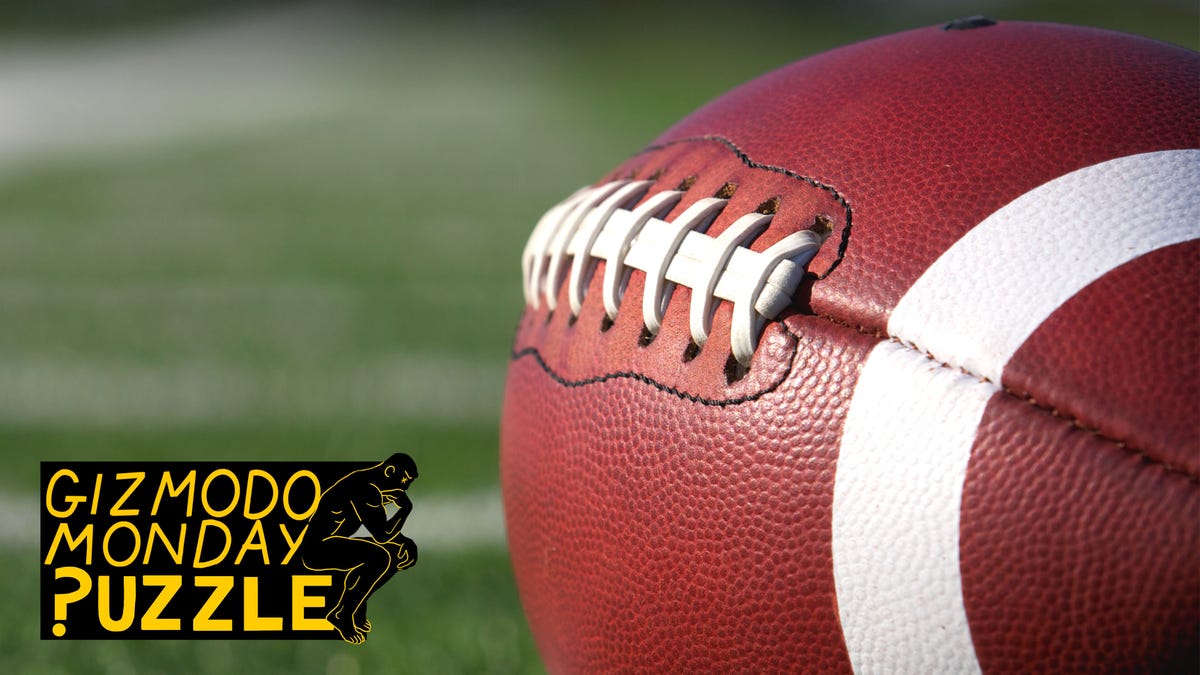
If every American, from newborns to centenarians, from vegans to pescatarians, ate four chicken wings each today, we’d still be about 100 million wings shy of yesterday’s consumption. At least, that’s according to the National Chicken Council, who seems to know their trade.
Major television events can shift the tides of entire industries. The British National Grid has a regular problem of large-scale surges in power demand during commercial breaks of popular telly programmes, because viewers all switch on their electric kettles for a spot of tea at the same time. The National Grid tasks a dedicated “energy balancing team” with predicting surges so they can supply extra electricity when needed. The World Cup is a top culprit, although grid workers must keep up-to-date on all trending TV—a hot plotline from the soap-opera EastEnders nearly blew the fuse across the whole country.
Advertisement
It feels like there’s puzzly potential in somehow staggering the programming to even out tea times. I fell short of designing one, so instead, in the spirit of excess, I’ve got two tricky sports puzzles for you this week, each worthy of its own feature.
Advertisement
Did you miss last week’s puzzle? Check it out here, and find its solution at the bottom of today’s article. Be careful not to read too far ahead if you haven’t solved last week’s yet!
Advertisement
Puzzle #29: A Sporting Chance
I missed the Super Bowl. All I know is that the two teams were perfectly matched in skill (suspend your disbelief) and that the score was not tied at halftime. I want to know the chances that the team who trailed at halftime pulled a comeback to win the game. Given only this information, what should I put the chances at?
Advertisement
By perfectly matched, I mean that the teams have the same probabilities of achieving various scores, and furthermore these probabilities don’t change based on game situation (i.e. which half they’re in or who’s ahead). Remember that Super Bowl games cannot end in ties: If scores are even after the second half, they enter overtime.
Bonus puzzle:
Several teams participate in a simple round-robin tournament (i.e. every team plays every other team once). Call a team a super-winner if every other team in the tournament either lost to them or lost to someone who lost to them. Argue that every tournament has at least one super-winner.
Advertisement
The halftime puzzle might seem like an overly simplistic model of athletic outcomes, but a study on NBA comebacks calculated how often the team that leads at halftime goes on to win the game and arrived at almost exactly the same quantity that this puzzle’s answer predicts. I’ll link the study in the solution next Monday.
Do you know a cool puzzle that you think should be featured here? Message me on Twitter @JackPMurtagh or email me at gizmodopuzzle@gmail.com
Advertisement
Solution to Puzzle #28: Duck Duck Go
Were you the fairy tale hero that the Ugly Duckling needed to survive last week’s puzzle?
Advertisement
Shout-out to sammyWinter for devising just the right strategy, which I’ve presented in my own words below.
Call the radius of the lake r. First, think about what happens if the duck swims in a straight line toward the edge of the lake in the direction opposite where the wolf is standing (so the wolf has to move a maximal distance to catch the duck on the other side). The duck has to travel a distance of r. In that same time, the wolf has to traverse half of the circumference of the lake, a distance of πr (half the circumference of a circle). Since the wolf moves four times faster than the duck, it is able to traverse a distance of 4r in the time it takes the duck to traverse a distance of r. So the wolf will reach the duck in time because πr < 4r.
Advertisement
If the duck were closer to the edge when it started its dash for shore, then it would take less time, but while the duck is getting closer to the edge, the wolf can also get closer to the point where the duck will meet land. The key observation is that if the duck swims in a circle around the center of the lake with radius r/4, then it completes a revolution around that circle in the same amount of time that it takes the wolf to complete a revolution around the whole lake. If the duck stays slightly inside its small circle, then it completes its revolution faster than the wolf completes his. This means that by swimming around that little circle of radius just under r/4, it can eventually make it so that the center of the lake sits between the duck and the wolf. At this point, the duck swims straight for the edge in the direction opposite the wolf just as before, only this time the duck only has to swim a distance of r – (¼)r = (¾)r, while the wolf still has to traverse a full πr. The wolf only moves four times faster than the duck, so it can only traverse a distance of 4*(3/4)*r = 3r in the time it takes for the duck to traverse a distance of (¾)r. Since the distance the wolf must travel (πr) is less than the distance it is able to travel in this time (3r), the duck will escape.
Services Marketplace – Listings, Bookings & Reviews